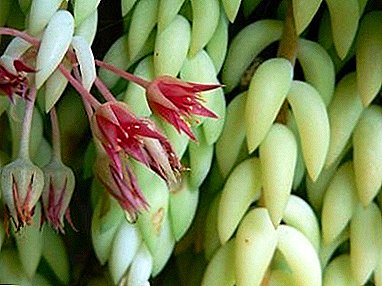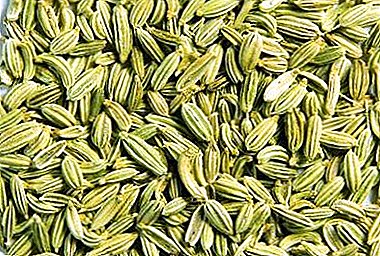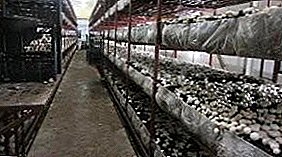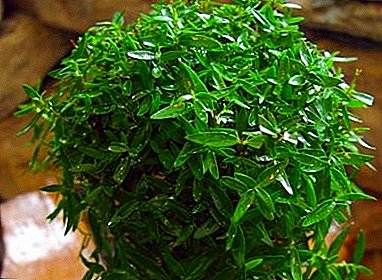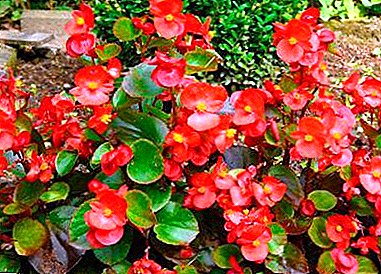
At the moment there are about 2000 varieties of begonias, strikingly different from each other in leaf shape, color, type and presence of flowers.
Of course, you can buy begonia in almost any flower shop, but it is much more interesting to grow a flower yourself.
Further in the article we will tell you what is called rooting of a flower and how this process takes place. We will provide step-by-step instructions on how to grow a plant by a leaf, and for clarity, you can watch a useful video.
Plant rooting
Rooting is called the process in which a leaf or cutting begins to grow its own roots and develop independently. If we talk about begonias, then it can be attributed to well-rooted houseplants. In the case of her vegetative reproduction of begonias is considered the easiest way to get new plants, which can cope with even the most inexperienced florist. Reproduction of both leaf and stem cuttings can be carried out in water, or immediately in the ground.
How is the procedure?
Even a small piece of the begonia leaf can eventually grow into an adult plant. To do this, just put it in the right environment and create favorable conditions. When sprouting in water, the first roots appear already after 1-2 weeks, when they reach a length of 2 cm, the plant is ready for transplanting to the ground (we wrote in our material about how to transplant begonia and how to look after it) .
The best time to breed
The process of complete rooting of begonias takes about 3 months, it is important that this time falls on a period of active growth - spring and summer, when relatively high temperatures and an abundance of natural lighting create optimal conditions for the development of a young plant. The end of autumn and the winter for most flowers are a period of peace, trying to root begonia at this time is not recommended, the process may take much longer, or even not at all successful.
Step-by-step leaf propagation instructions
 For successful rooting it is important to choose a large healthy leaf without damage, the mother plant must be an adult, fully formed and not weakened.
For successful rooting it is important to choose a large healthy leaf without damage, the mother plant must be an adult, fully formed and not weakened.
Not all types of begonias successfully reproduce by rooting the leaf. (about what are the types of annual and perennial begonias and how to care for them, read here). For this purpose, most of the decorative leafy species with villi on the underside of the leaf and plants with pendant shoots will do.
There are three main types of rooting of begonia leaves:
- rooting in water;
- rooting of the whole leaf in the ground;
- rooting leaf fragment in the ground.
The first method is considered the simplest, but as a result you can get only one new plant. For rooting in water it is necessary:
- Cut a large healthy leaf with a handle.
- Fill the container with water at room temperature and add an activated carbon tablet.
- The prepared sheet is placed in water about a third.
- To speed up the appearance of the roots, you can add a solution of root to the water.
When the length of the roots reaches 1-2 cm, the sprout is planted in the ground. When rooting a whole leaf of begonia, the procedure is as follows:
- Similar to the first method, select and cut a large healthy leaf, approximately 7 cm long.
- Make small cuts across the veins.
- Prepare the tank and soil for planting. The soil must be layered: the bottom layer is a mixture of peat and moss, the top one is river sand. The thickness of the upper layer must be at least 2 cm.
- Lay the sheet on the surface of the moistened soil and press lightly.
- Arrange a greenhouse, the ground as needed to spray water.
Important! All cuts must be made with a sharp knife or blade. When using scissors, the cuts are clamped, and the nutrient supply stops.
When rooting by dividing a leaf into fragments, as a result, several seedlings can be obtained at once. The leaf selected for breeding is divided into triangular areas so that at least one whole vein remains in each, then each of the triangles is planted into the ground with a sharp edge of about a third.
For successful rooting it is necessary to maintain high temperature and humidity., therefore, the best option would be to put the seedlings in the greenhouse. After about three months, young plants can be planted in separate pots.
We offer to look at the video how the rooted begonia leaf in the water looks like:
Landing rules
 The first pot of begonias should be small and wide, suitable both plastic containers and clay or ceramic, most importantly, that there would be enough drainage holes at the bottom. Soil is best to choose a special for begonias, but is suitable and versatile for flowering plants. Independently achieve the desired effect by mixing turf, leaf soil, peat and sand in a ratio of about 2: 1: 1: 1.
The first pot of begonias should be small and wide, suitable both plastic containers and clay or ceramic, most importantly, that there would be enough drainage holes at the bottom. Soil is best to choose a special for begonias, but is suitable and versatile for flowering plants. Independently achieve the desired effect by mixing turf, leaf soil, peat and sand in a ratio of about 2: 1: 1: 1.
Landing procedures:
- Pour a drainage layer on the bottom of the pot; on top of it, you can pour a small layer of charcoal on top of it to further protect the delicate roots from moisture overload.
- Then a small amount of earth is filled up (1-2 cm).
- A sapling is placed in the center of the pot and gently sprinkled with earth on all sides.
- After planting, begonia must be poured abundantly with water and it must be ensured that for some time the earth does not completely dry out.
Do not tamp the soil when planting, as it can damage young fragile roots (how to plant begonia at home?). When soil subsides after watering, you need to add the missing amount.
Aftercare
The rules for caring for young plants do not differ significantly from caring for adults, with the only difference that they need a little more attention (how to grow and care for room begonia?). When providing comfortable conditions, a small sprout will quickly get stronger and turn into a full-fledged plant:
- Like all people from tropical countries, begonias need bright diffused light, it will feel good on the south and southeast windowsill.
Attention! Direct sunlight can cause overheating of the plants and burns on the leaves, so in the summer, the begonia should be slightly shaded.
- Room temperature of + 18-22 degrees is optimal for begonias, sharp drops and drafts should be avoided.
- Humidity is needed increased, while begonia is not strongly recommended to spray - it can lead to various diseases on the leaves, for example, powdery mildew.
- Watering begonias requires regular and abundant, about 2 times a week, while it is important to ensure that water does not accumulate in the pan, and the top layer of soil has time to dry out.
Thin fragile stems and tender leaves of begonias give the impression that this plant is fragile, whimsical, capable of dying with the slightest deviation from ideal conditions. In practice, this is not the case. Begonias are hardy enough, and many varieties are able to live even in the open field.
Rooting begonias with a leaf is one of the easiest and fastest ways to breed. If you follow the simple rules, you can get a real flower garden from just one or two leaves, which fills the atmosphere in the house with comfort and spring freshness.
- Why do buds and leaves fall off in begonia, how to help the plant?
- Why are the leaves curled in begonias and what should I do?
- How to prepare begonia for awakening after it has blossomed?
- Why blooming begonia does not bloom? How to achieve beautiful buds?


